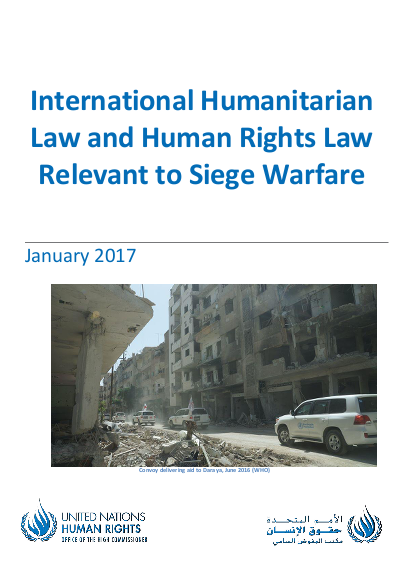
This note seeks to provide humanitarians working in Syria and other relevant actors with an overview of some of the key international humanitarian law (IHL) and international human rights law (IHRL) rules relevant to the use of siege warfare.
IHL does not define the term “siege”, and explicit references to sieges in IHL treaties are limited. That said, in its broadest terms a siege can be understood as the military encirclement of an area with the imposition of restrictions on the entry and exit of essential goods with the aim of forcing its surrender. The use of sieges as a tactic of war is not prohibited under IHL if directed solely at a military objective and is in conformity with all relevant IHL rules. The capture of an enemy-controlled area is a legitimate military aim and military commanders often view laying siege to a town as less costly than fighting street-to-street. However, the effects of the siege must distinguish between fighters and civilians. Therefore any tactic which restricts civilians’ access to essential items necessary for their well-being such as water, food, and medicine is prohibited. One set of relevant IHL rules relates to how parties to the conflict may direct their attacks (including the key principles of distinction, proportionality, and precaution in attack), and protects civilians who are not directly participating in the hostilities from the effects of the hostilities. These rules are not considered in this note, for purposes of brevity.1 A second set of rules, which is the focus of this note, relates directly to the treatment of civilians themselves - requirements surrounding the collection and caring for the sick and wounded, including the delivery of humanitarian assistance to civilians; and the prohibition on the use of starvation of the civilian population as a tactic of war.